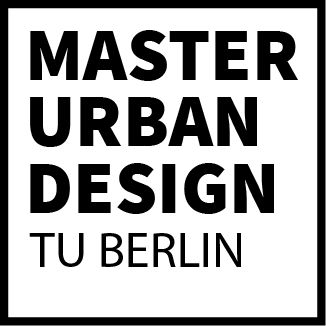 Urban Planning Studio SoSe 2023
Urban Planning Studio SoSe 2023
Berlin-Warsaw Villages in Berlin
Tutors: Christian Kloss, Prof. Jan Polivka
Chair: Urban Planning and Built Environment Development, Institute of Urban and Regional Planning
BERLIN PARTICIPANTS: Andrea Armenti, Cindy Steiner, Consuelo Araneda, Frederic Christian Daniel Lonjaret, Frederik
Florens Kriegeskorte, Jeremi Karol Mastalerz, Jiefan Liu, Laura Katharina Geißinger Lasso, Lukas Elenschleger, Mario Ben–
jamin Peralta, Gustavo Adrian Montemayor Magallanes, Natalia Ignacia Perez Maruri, Paul Wiegand, Yuqi Feng
WARSAW PARTICIPANTS: Alona Usychenko, Daniel Chiłła, Jagoda Kućko, Julia Pytko, Karolina Klukowska, Karolina Paj–
chel, Maciej berzig , Milena Micun, Zuzanna Bućko, Zuzanna Kasztelaniec, Zygmunt Stiasny
Berlin‘s diverse neighborhoods and the formation of Groß-Berlin have made it an attractive city. Expanding in 1920, it became the world‘s third-largest city, doubling its population and covering 878.1 km2. Despite this growth, Berlin comprises smaller districts, neighborhoods, and historic villages, each with its own identity. Our studio project focused on former village development in Berlin, considering their current qualities, future potential, and role within the urban structure. We explored ways to improve living conditions, preserve historical relicts, and even integrate rural activities. Our vision aimed to create inclusive, dynamic village centers that respect the past while shaping a meaningful future urban landscape.
With a focus on the future role of village centers in Berlin‘s social and built structure, our workshop aimed to generate ideas, concepts, and designs for two former village centers. Polish architecture students from Politechnika University in Warsaw and German urban design students from the Technical University of Berlin collaborated in a two-week Urban Design Workshop. Mixed groups of 5 to 6 students, representing diverse nationalities and academic backgrounds, fostered multidimensional urban design approaches. The first workshop immersed participants in Berlin‘s context, while the second workshop in Warsaw offered a fresh perspective on Poland‘s architectural and urban heritage.
Urban villages show high potential for quality of life, green spaces, and community-oriented living. A vital mix of functions,public space, and user groups in human-scale urban environments improves urban life for citizens and
benefits diverse groups. However, low density and homogenous population development may accelerate gentrification and create exclusive urban spaces. The low building density poses challenges in urban growth and sprawl. Despite these concerns, urban villages offer promising opportunities for sustainable and inclusive urban development.
A polycentric city has multiple centers of economic and social activity, not just one central downtown. Related concepts include: Walkability creates movement-animating environments across spatial levels. The city of short distances promotes sustainability with compact, mixed-use structures, excluding private cars. The 15 Minute City concept enables daily errands within 15 minutes on foot or bike in mixed, resilient neighborhoods.
Urban-rural relationships challenge the dichotomy and promote integrated cities and countryside based on spatial and functional interdependencies. Visible and invisible flowsof people, capital, goods, information, and technology support the urban-rural continuum. However, defining urban and rural areas varies, making research complex. Nonetheless, both physical and functional boundaries are increasingly blurred.







